- 會員登入
- 加入會員
- Call : 07-6561921 轉6664 ~ 6666
- fgce@ecp.fgs.org.tw
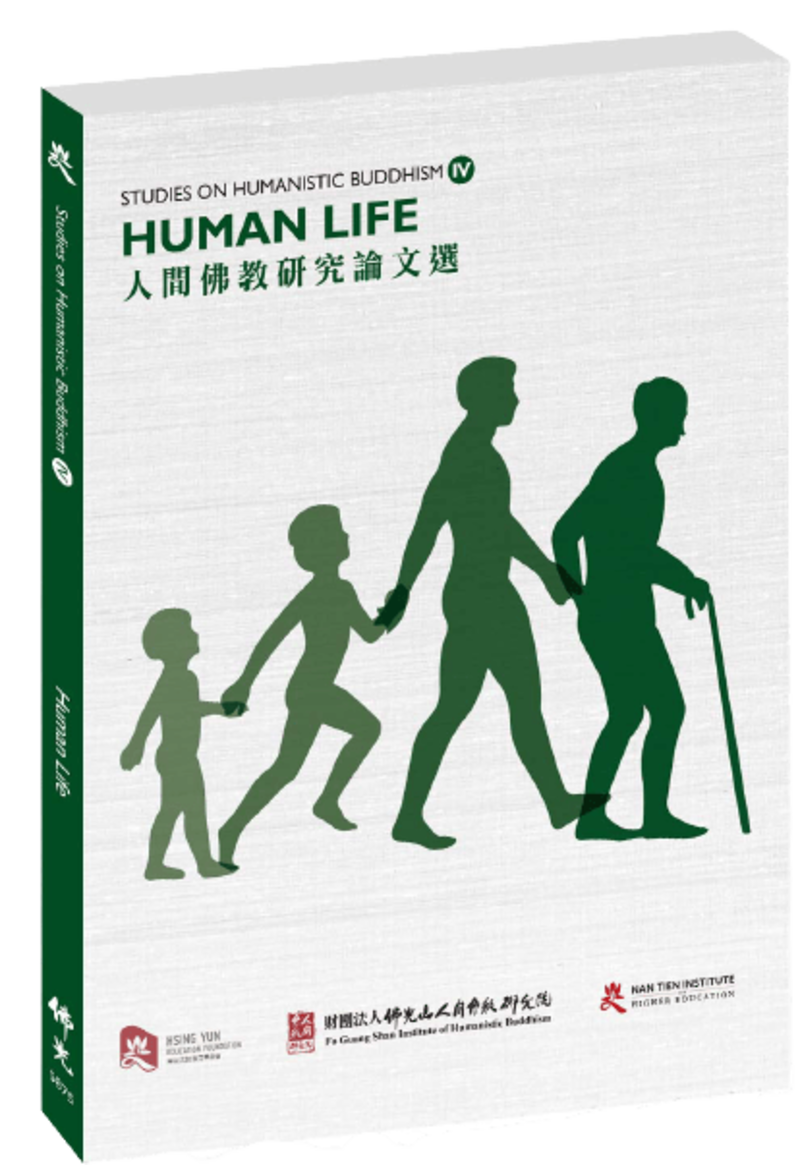
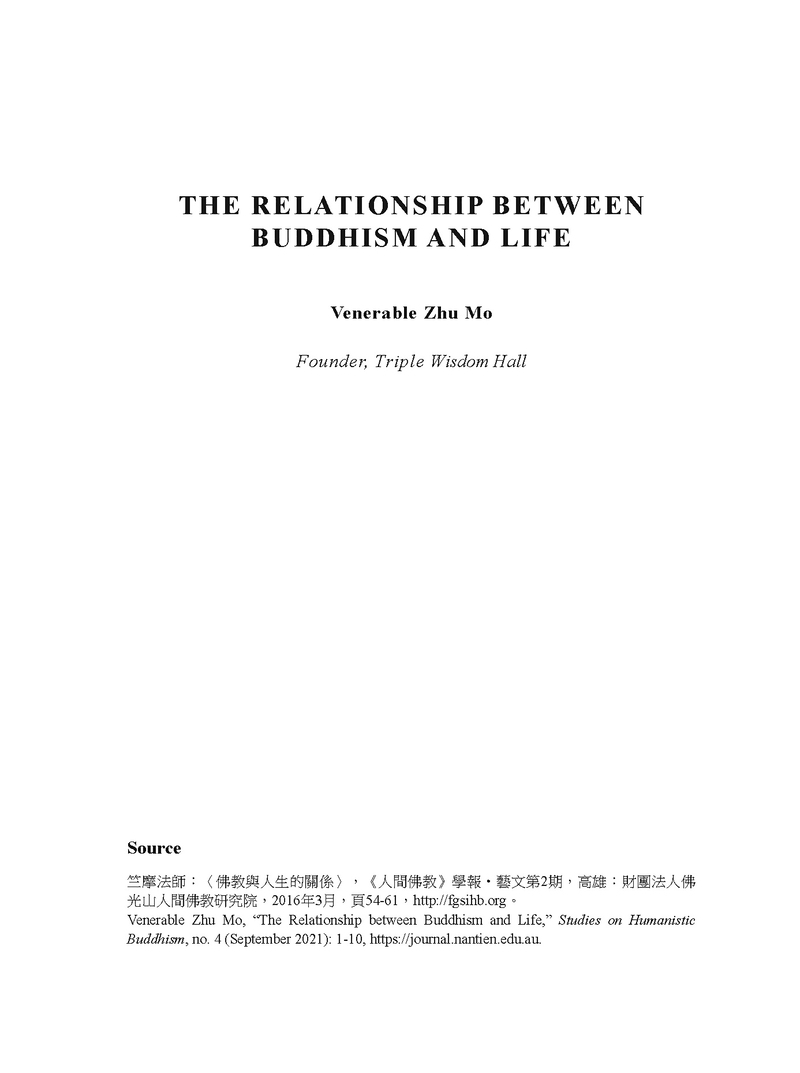
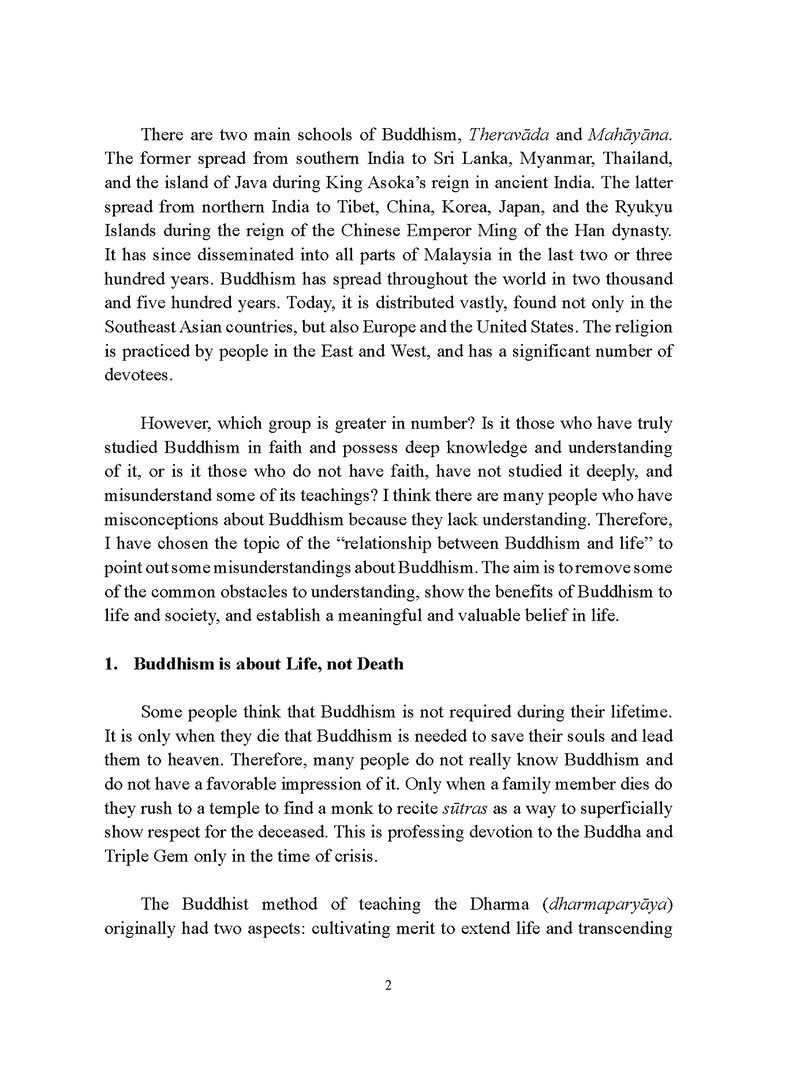
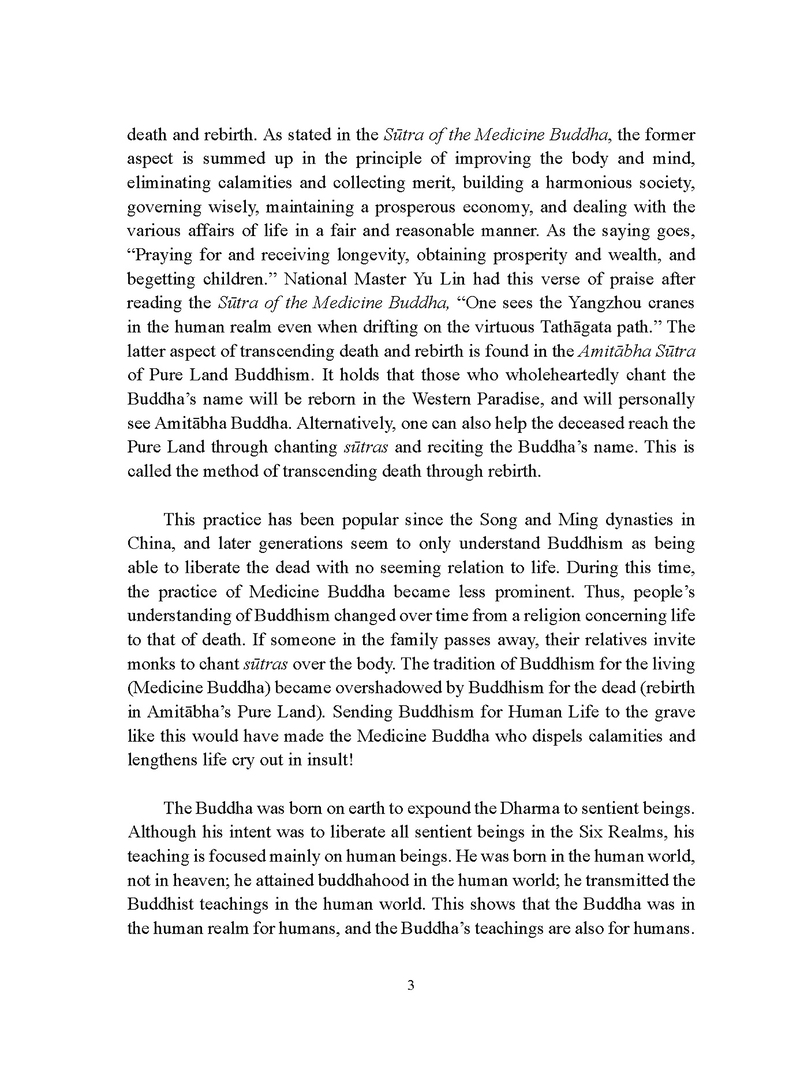
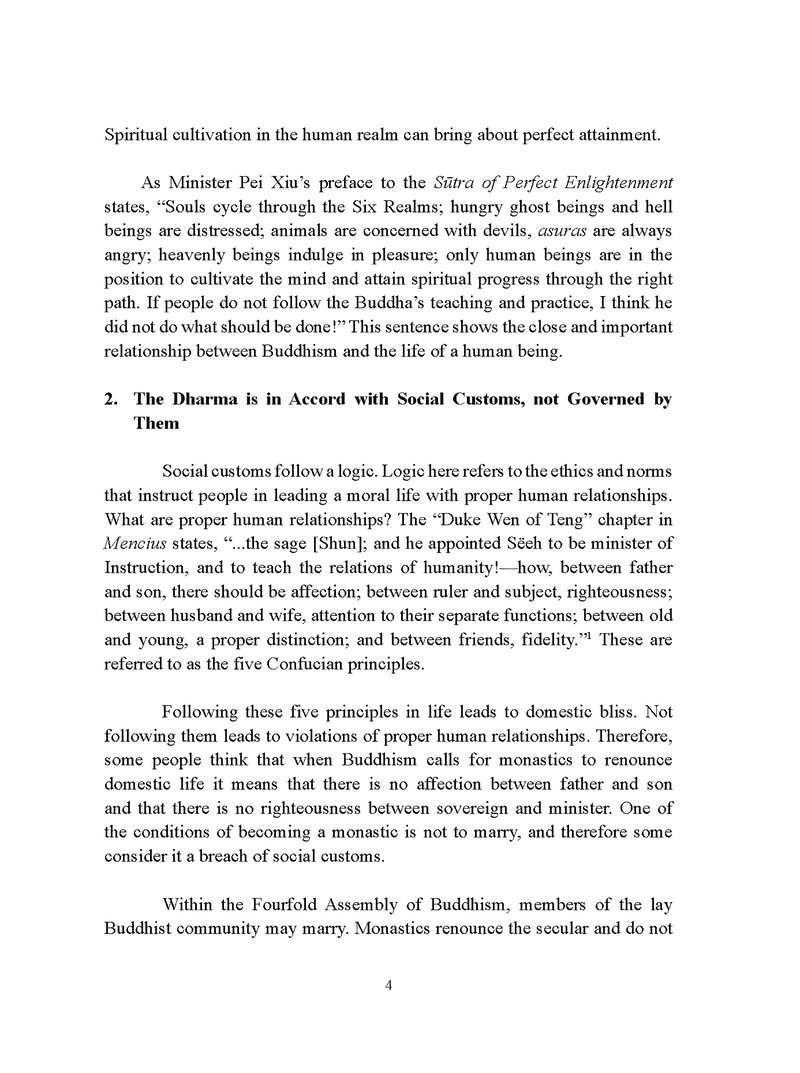
書籍編號 :5875
作者 : Editor-in-Chief: Venerable Miao Guang and Venerabl
出版社 : 人間佛教研究院
出版日期 : 2021-09-15
ISBN : 978-957-457-592-3
頁數 :208
裝訂 :平裝
定價 :250.00
本書折扣:9折,優惠價為:225
Volume four of Studies on Humanistic Buddhism contains eight translated articles, two commentaries, two original articles, and a perspective piece all relating to human life. Human life is a topic with a vast scope. It was chosen because it is central to Humanistic Buddhism. As several articles in this volume and previous volumes discuss, Humanistic Buddhism developed as a response to the perception that Buddhism no longer related directly to human life. By the nineteenth century in China, Buddhism was seen to provide what came to be mainly perfunctory rituals to be performed upon the death of a family member. Humanistic Buddhism revived Buddhism as an intrinsic part of daily life.
Editor’s Preface
PAPERS
Venerable Zhu Mo 竺摩法師: The Relationship between Buddhism and Life 佛教與人生的關係
Tan Jie 譚潔: Venerable Master Hsing Yun’s Perspective on Humanistic Buddhism’s Life Education 星雲大師人間佛教的生命教育觀
Lee Chih-Ying 李芝瑩: Recrafting Role Models: A Discussion of the Contemporary Application of Buddhist Life Education Through the Comic—The Ten Great Disciples 典範重塑— 從《畫說十大弟子》 談佛教生命教育的當代實踐
Huei Kai Shih 慧開法師: A Modern Interpretation of Venerable Master Hsing Yun’s Belief that “Life Does Not Die”星雲大師人間佛教信念「生命不死」 的現代詮釋
Zheng Xiaojiang 鄭曉江: Buddhism and Hospice Care 佛教與臨終關懷
Chen Yi Biao 陳一標: Objectively Validating the Practice of Humanistic Buddhism 人間佛教實踐的客觀化
Liu Chengyou 劉成有: The Value of the Buddhism Practiced by Fo Guang Shan 佛光山佛教實踐的當代價值
Han Cheng-cai 韓成才: The Concept of Wealth in Venerable Master Hsing Yun’s Humanistic Buddhism 試論星雲大師人間佛教財富觀
Bee Scherer: Human World Buddhism at Fo Guang Shan: Localising Anthropocentric Dharma
Yu Sang: The Buddhist Nationalism in Master Fafang’s Thought 1
Nadine Levy and Suzanne Franzway: Perspective: The Teacher and Late Modern Buddhism in the West: Commitment and Dilemmas
COMMENTARIES
D.E. Osto: Commentary: Loving-Kindness and Compassion
Darui Long: Commentary: Yang Renshan, a Living Bodhisattva
APPENDICES
Venerable Master Hsing Yun 星雲大師: Appendix: Loving-Kindness and Compassion
Venerable Master Hsing Yun 星雲大師: Appendix: Yang Renshan, a Bodhisattva
Editor’s Preface
Volume four of Studies on Humanistic Buddhism contains eight translated articles, two commentaries, two original articles, and a perspective piece all relating to human life.
Human life is a topic with a vast scope. It was chosen because it is central to Humanistic Buddhism. As several articles in this volume and previous volumes discuss, Humanistic Buddhism developed as a response to the perception that Buddhism no longer related directly to human life. By the nineteenth century in China, Buddhism was seen to provide what came to be mainly perfunctory rituals to be performed upon the death of a family member. Humanistic Buddhism revived Buddhism as an intrinsic part of daily life.
The theme of human life also provided a wide range of options for our translators. For this volume, they chose the articles that they translated from Chinese. Some of the articles are written in an academic style, others are less formal papers that were written for talks and presentations that were later published in conference proceedings. Our mission as a journal is to provide a forum catering to scholar-practitioners of Buddhism. That includes having our own team of translators, editors, and proofreaders who treat their work as an act of Buddhist practice. It allows for the translation into English of many lesser available Chinese articles. It is also a medium for scholar-practitioners to publish papers that relate directly to the practice of Buddhism in daily life, in addition to more abstract, academic topics. Some of the subjects addressed in the papers selected for translation are death, hospice care, wealth, comics, and life education. Life education may not be familiar to all readers. In Taiwan, schools include life education as part of their curricula. Life education is learning that has social and spiritual aspects. Students are encouraged to search for meaning in their lives. Because of the ethical and spiritual aspects of life education, the concept was taken onboard by many Fo Guang Shan members.
Venerable Zhu Mo’s article “The Relationship between Buddhism and Life” focuses on a topic mentioned in other articles here—the phenomenon found among many Chinese people of only turning to Buddhism as a set of rituals for the dead. Venerable Zhu Mo reminds us that Buddhist teachings include not only transcending birth and death, but also cultivating merit to improve life. Venerable Zhu Mo describes how Pure Land Buddhism gained popularity in China beginning in the Song Dynasty. With the emphasis on being reborn into the Pure Land, perhaps over time other aspects of Buddhism waned in people’s minds. The article goes on to argue that Buddhist teachings, especially the Five Precepts, are in line with the five Confucian principles for a harmonious society. The author concludes with a reminder that even the transcendent bodhisattvas engage in worldly acts to benefit sentient beings.
The theme of Buddhist life education is directly addressed by Tan Jie in her article “Venerable Master Hsing Yun’s Perspective on Humanistic Buddhism’s Life Education.” Venerable Master Hsing Yun teaches that spiritual cultivation is a part of day-to-day life. Tan shows how he provides simple, practical ways to live a happy life and create a beautiful world. For example, the three acts of goodness: (1) Do good deeds. (2) Speak good words. (3) Think good thoughts. Another example is the four givings: (1) Give others confidence. (2) Give others joy. (3) Give others hope. (4) Give others convenience. Tan concludes that, if everyone makes an effort toward their own spiritual cultivation and follows these simple teachings, then a happy life and a beautiful world are possible.
“Recrafting Role Models: A Discussion of the Contemporary Application of Buddhist Life Education through the Comic The Ten Great Disciples” by Lee Chih-Ying analyzes how the
comic uses mixed media (text, photography, drawings) and symbolism to retell the story of the ten great disciples of the Buddha for a contemporary audience. Lee shows how the comic graphically represents abstract Buddhist concepts as an application of Buddhist life education. Moreover, the sparse narrative of a graphic story allows the readers to fill in the gaps. The readers thereby retell and reinterpret the stories of Buddha’s disciples in their own minds. This allows for the readers to not just copy the model behavior disciples, but through the internal dialogue of the story reflect on their own lives.
Venerable Huei Kai’s article “A Modern Interpretation of Venerable Master Hsing Yun’s Belief that ‘Life Does Not Die’” also examines the Buddhist teachings related to birth and death, saṃsāra and nirvāṇa. The article presents a reinterpretation of the religious implication of the concept that “life does not die” (生命不死) based on Venerable Master Hsing Yun’s vision of Humanistic Buddhism. This reinterpretation moves beyond the dualism of life and death, space and time, self and other. Like Venerable Zhu Mo above, Venerable Huei Kai notes that bodhisattvas see the cycle of birth and death as the medium in which to liberate sentient beings. The article’s intent is to serve as an inspiration for people to follow the bodhisattva path.
Zheng Xiaojiang’s article “Buddhism and Hospice Care” looks at how Buddhism can enhance hospice care at the end of human lives. Hospice care aims to provide comfort and alleviate pain for dying patients, but otherwise does not employ life-prolonging procedures. The focus can then be put on attending to the emotional and spiritual needs of the dying patient. Zheng argues that Buddhist wisdom regarding ending the cycle of birth, death, and rebirth can significantly contribute to hospice care. He provides the historical context in which hospice care developed, and provides recent examples of how Buddhist teachings have already been widely integrated into end of life care in Taiwan and China.
In “Objectively Validating the Practice of Humanistic Buddhism,” Chen I-Biau calls for greater dialogue and scholarly exchange between Buddhist studies and other academic disciplines. This will prevent Buddhist studies from becoming overly insular and isolated. A further call is for Buddhists to align their religious ideas with their professions. Specifically, Buddhists should gain professional accreditation in their fields and then incorporate Buddhism into their professional practice.
Liu Chengyou describes how Fo Guang Shan organically integrates individuals, groups, and the Dharma in “The Value of Buddhism Practiced by Fo Guang Shan.” As pointed out in the perspective piece later in this volume, access to an overwhelming amount of information about a myriad of Buddhist ideas that have developed over several millennia as Buddhism has been incorporated into different cultures can lead to confusion. Fo Guang Shan’s Humanistic Buddhism presents an integrated model for life (individuals), culture (groups), and faith (the Dharma). It provides a way to easily adapt Buddhist faith to fit into contemporary lives.
Han Chengcai analyzes the concept of wealth in “A Study on the Concept of Wealth in Venerable Master Hsing Yun’s Humanistic Buddhism.” Wealth is somewhat ambiguous within Buddhism. On the one hand, there is a long tradition of monastic self-imposed poverty. On the other hand, the generosity of lay Buddhists provides for the care of monastics and for projects such as building temples. Moreover, money has become essential for purchasing the necessities of life. Han describes Venerable Master Hsing Yun’s skillful means of using monetary wealth to promote spiritual wealth. Despite the fact that the desire for wealth can be unwholesome, the use of money is ubiquitous and nearly unavoidable. Encouraging lay practitioners to live in poverty is not
a growth model for Buddhism. Han points out that Venerable Master Hsing Yun’s concept of wealth takes into account the fact that money is needed to take care of material needs, enables Buddhist education, and is the basis for charity. Acquisition of wealth is beneficial, as long as it is properly obtained and reasonably allocated. Venerable Master Hsing Yun’s concept of wealth is broad. It has spiritual and material aspects. Anything that is meaningful and valuable to us fits his definition of wealth. Han concludes that Venerable Master Hsing Yun’s concept of wealth highlights his work on integrating Buddhism with contemporary life.
Bee Scherer provides another original English language article, “Human World Buddhism at Fo Guang Shan: Localizing Anthropocentric Dharma.”Scherer’s article provides continuity with Yu Sang’s, as well as with the last volume of this journal (Glocalization of Buddhism). Scherer discusses the somewhat problematic English term ‘Humanistic Buddhism,’ and proposes ‘Human World Buddhism’ to avoid the historical and philosophical connotations of the concept of humanism as it developed in Europe. Scherer goes on to consider the Sinocentric and globalizing impulses of the Fo Guang Shan Buddhist order. These two impulses create a tension between the centripetal force of the Chinese cultural cohesion of Fo Guang Shan and the centrifugal force of worldwide expansion of the order. One of the main challenges faced by Fo Guang Shan is how to achieve true localization beyond the Chinese cultural sphere. Scherer states that the balance between maintaining a Chinese Buddhist heritage and opening up and glocalizing can only be reached through constant and conscientious negotiation of needs in the triangulation of the international, the parochial, and the local.
Yu Sang’s “The Buddhist Nationalism of Master Fafang’s Thought” is an article submitted in English. Yu Sang analyzes how the sense of crisis regarding the Chinese national identity brought on by the invasion of Western powers and Western ideologies, particularly the concept of nationalism, in the nineteenth and twentieth centuries influenced Buddhist thinkers such as Master Fafang. She argues that Master Fafang combined the Buddhist idea of salvation of the world with the secular idea of saving the Chinese nation. She further argues that Master Fafang connected Buddhist thought with Confucian and Daoist ideas, so that Buddhist salvation of the world was tied to the spread of Chinese culture. This is presented as a skillful means of adapting Buddhism to the contemporary context in which it is found.
Nadine Levy and Suzanne Franzway give us a perspective piece written in English, “The Teacher and Later Modern Buddhism in the West: Commitment and Dilemmas.” The authors examine the glocalizing aspect of Buddhism through their own life experiences. Both authors classify themselves as “Convert Buddhists.” They both came to Buddhism through their own curiosity rather than by a family or personal connection to a Buddhist organization or teacher. They point out the importance of translation. Translation provides access to Buddhist texts in the readers’ native language, and therefore expands the reach of Buddhism. From the authors’ perspective, in an age where there is access (even if only virtual) to many Buddhist traditions and teachers (some of them also Convert Buddhists), we need to use discernment when choosing among them. There is a risk of becoming a dilettante with only shallow understanding, and with a fragile practice, without the support of a tangible community and knowledgeable guidance of wise teachers. Based on their own personal relationship, the authors conclude by emphasizing the importance of good Dharma friends.
In a first for this journal, D. E. Osto and Darui Long follow in the Buddhist tradition of writing commentaries on Buddhist texts. They comment on pieces by Venerable Master Hsing Yun’s Buddha-Dharma Pure and Simple. Osto provides a commentary on “Loving-Kindness and Compassion.”Osto writes that loving-kindness is the love of Christ, not of Romeo and Juliet. Compassion naturally follows from loving-kindness in the sense that wanting to bring happiness to others leads to having compassion for their suffering. Like Han’s article, Osto also brings up the concept of non-material wealth, referring to Venerable Master Hsing Yun’s idea that loving-kindness and compassion are a “priceless passport.” A person might own nothing, but happiness and safety will follow wherever they go.
Long comments on the piece “Yang Renshan, a Bodhisattva.” In a sense, this journal is a result of Yang Renshan’s legacy. Long describes how Yang made it his mission to alleviate the shortage of Buddhist texts in China in the nineteenth and early twentieth centuries. Yang traveled widely collecting Buddhist texts and established the Jinling Scriptural Press. This printing house played an indispensable role in the revival of Chinese Buddhism that has been discussed in several articles in this volume. Because of his compassion and contribution to the revival of Chinese Buddhism, Yang is called a bodhisattva. Long recounts his own meeting with Professor Rulan Chao, the great granddaughter of Yang Renshan.
Buddhism exists in people’s minds and actions. Therefore, it is part of human life in this world. Venerable Master Hsing Yun believes that the Buddha taught what the human world needs to help people resolve their difficulties in life. He defines Humanistic Buddhism in terms of how it relates to human life: “...what the Buddha taught, what is essential to human beings, what purifies, and what is virtuous and beautiful.” The Diamond Sūtra offers another example of Buddhism in human life. It begins not in the heavenly realms or with the working of miracles, but with the Buddha in the human world putting on his robe and taking his alms bowl into town for offerings. After eating his meal of rice, he returned to his dwelling, put away his bowl and robe, then washed his feet. This is both prosaic and profound. The sense of the profound being found within the prosaic is a theme in Chan Buddhism. In the well-known words of a layman:
My daily activities are not unusual,
I’m just naturally in harmony with them.
Grasping nothing, discarding nothing,
In every place there’s no hindrance, no conflict.
[My] supernatural power and marvelous activity—
Drawing water and carrying firewood.
Layman P’ang knew that Buddhism is for humans, that awakening happens while living this life. This is echoed in a gāthā by Huineng found in the Platform Sūtra:
The Dharma is within the world,
Apart from this world there is no awakening.
Seeking bodhi apart from the world
Is like looking for a rabbit’s horn.
In his commentary on Huineng’s words, Venerable Master Hsing Yun wrote, “The Buddhist way of life is to do mundane work with supramundane thinking. This means that while we live in the mundane world we only have the supramundane thoughts of Buddhism: deep, boundless wisdom, and compassion to liberate sentient beings.”
Michael Murphy
Bilingual Editor
The Relationship between Buddhism and Life 佛教與人生的關係
Venerable Zhu Mo 竺摩法師
There are two main schools of Buddhism, Theravāda and Mahāyāna. The former spread from southern India to Sri Lanka, Myanmar, Thailand, and the island of Java during King Asoka’s reign in ancient India. The latter spread from northern India to Tibet, China, Korea, Japan, and the Ryukyu Islands during the reign of the Chinese Emperor Ming of the Han dynasty. It has since disseminated into all parts of Malaysia in the last two or three hundred years. Buddhism has spread throughout the world in two thousand and five hundred years. Today, it is distributed vastly, found not only in the Southeast Asian countries, but also Europe and the United States. The religion is practiced by people in the East and West, and has a significant number of devotees.
However, which group is greater in number? Is it those who have truly studied Buddhism in faith and possess deep knowledge and understanding of it, or is it those who do not have faith, have not studied it deeply, and misunderstand some of its teachings? I think there are many people who have misconceptions about Buddhism because they lack understanding. Therefore, I have chosen the topic of the “relationship between Buddhism and life” to point out some misunderstandings about Buddhism. The aim is to remove some of the common obstacles to understanding, show the benefits of Buddhism to life and society, and establish a meaningful and valuable belief in life.
1. Buddhism is about Life, not Death
Some people think that Buddhism is not required during their lifetime. It is only when they die that Buddhism is needed to save their souls and lead them to heaven. Therefore, many people do not really know Buddhism and do not have a favorable impression of it. Only when a family member dies do they rush to a temple to find a monk to recite sūtras as a way to superficially show respect for the deceased. This is professing devotion to the Buddha and Triple Gem only in the time of crisis.
The Buddhist method of teaching the Dharma (dharmaparyāya) originally had two aspects: cultivating merit to extend life and transcending death and rebirth. As stated in the Sūtra of the Medicine Buddha, the former aspect is summed up in the principle of improving the body and mind, eliminating calamities and collecting merit, building a harmonious society, governing wisely, maintaining a prosperous economy, and dealing with the various affairs of life in a fair and reasonable manner. As the saying goes, “Praying for and receiving longevity, obtaining prosperity and wealth, and begetting children.” National Master Yu Lin had this verse of praise after reading the Sūtra of the Medicine Buddha, “One sees the Yangzhou cranes in the human realm even when drifting on the virtuous Tathāgata path.” The latter aspect of transcending death and rebirth is found in the Amitābha Sūtra of Pure Land Buddhism. It holds that those who wholeheartedly chant the Buddha’s name will be reborn in the Western Paradise, and will personally see Amitābha Buddha. Alternatively, one can also help the deceased reach the Pure Land through chanting sūtras and reciting the Buddha’s name. This is called the method of transcending death through rebirth.
This practice has been popular since the Song and Ming dynasties in China, and later generations seem to only understand Buddhism as being able to liberate the dead with no seeming relation to life. During this time, the practice of Medicine Buddha became less prominent. Thus, people’s understanding of Buddhism changed over time from a religion concerning life to that of death. If someone in the family passes away, their relatives invite monks to chant sūtras over the body. The tradition of Buddhism for the living (Medicine Buddha) became overshadowed by Buddhism for the dead (rebirth in Amitābha’s Pure Land). Sending Buddhism for Human Life to the grave like this would have made the Medicine Buddha who dispels calamities and lengthens life cry out in insult!
The Buddha was born on earth to expound the Dharma to sentient beings. Although his intent was to liberate all sentient beings in the Six Realms, his teaching is focused mainly on human beings. He was born in the human world, not in heaven; he attained buddhahood in the human world; he transmitted the Buddhist teachings in the human world. This shows that the Buddha was in the human realm for humans, and the Buddha’s teachings are also for humans. Spiritual cultivation in the human realm can bring about perfect attainment.
As Minister Pei Xiu’s preface to the Sūtra of Perfect Enlightenment states, “Souls cycle through the Six Realms; hungry ghost beings and hell beings are distressed; animals are concerned with devils, asuras are always angry; heavenly beings indulge in pleasure; only human beings are in the position to cultivate the mind and attain spiritual progress through the right path. If people do not follow the Buddha’s teaching and practice, I think he did not do what should be done!” This sentence shows the close and important relationship between Buddhism and the life of a human being.





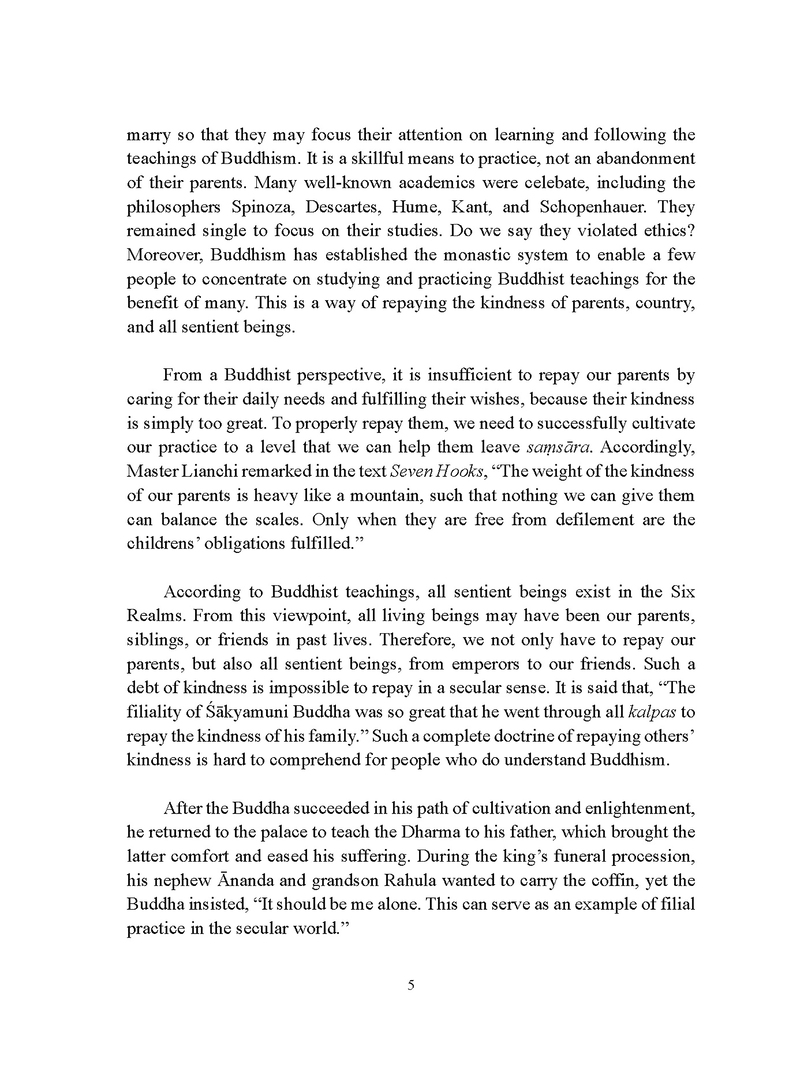
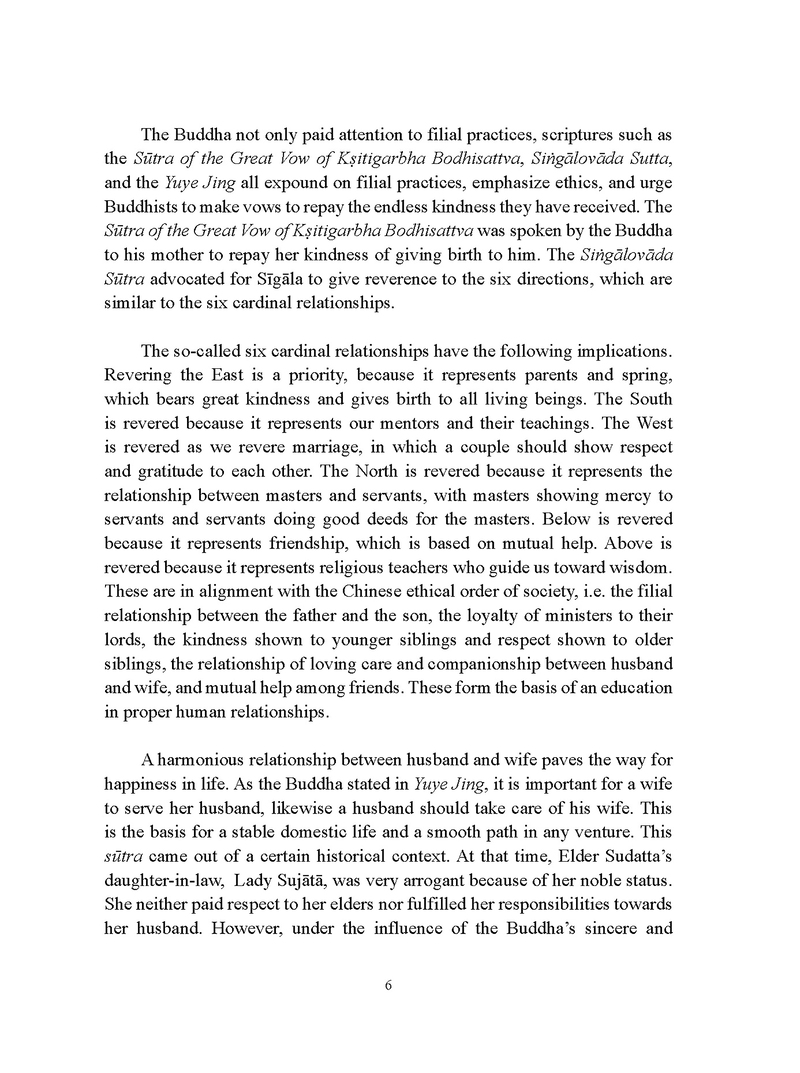

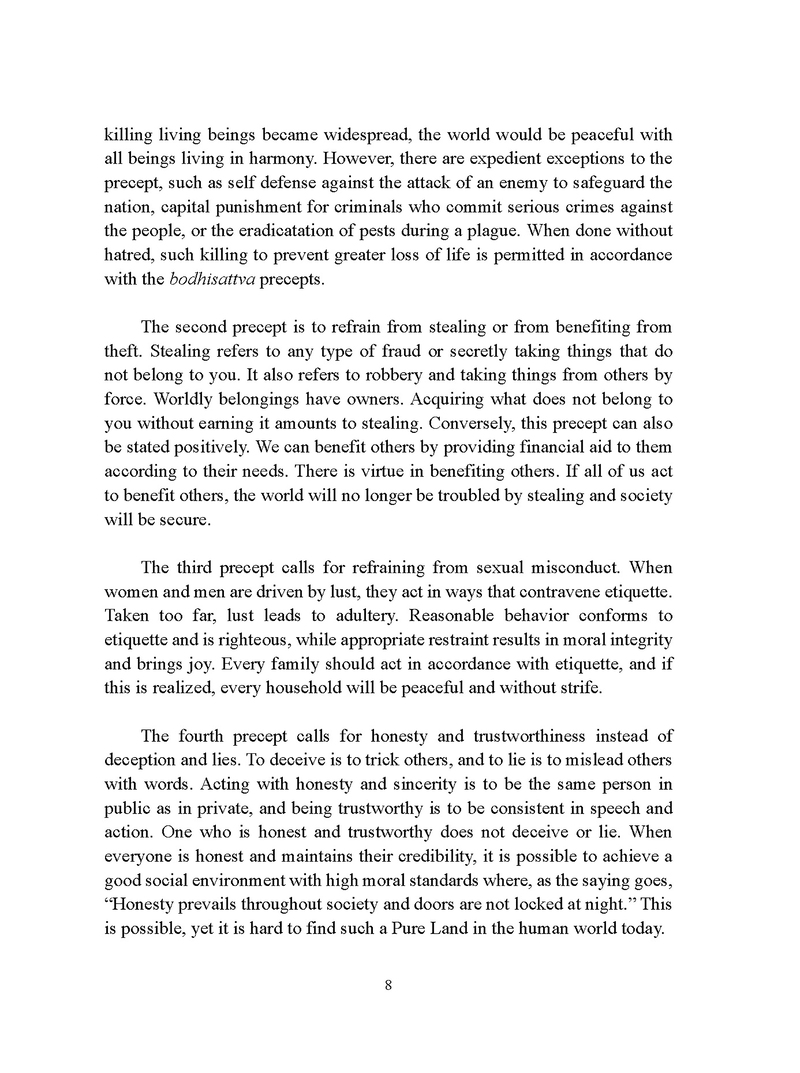
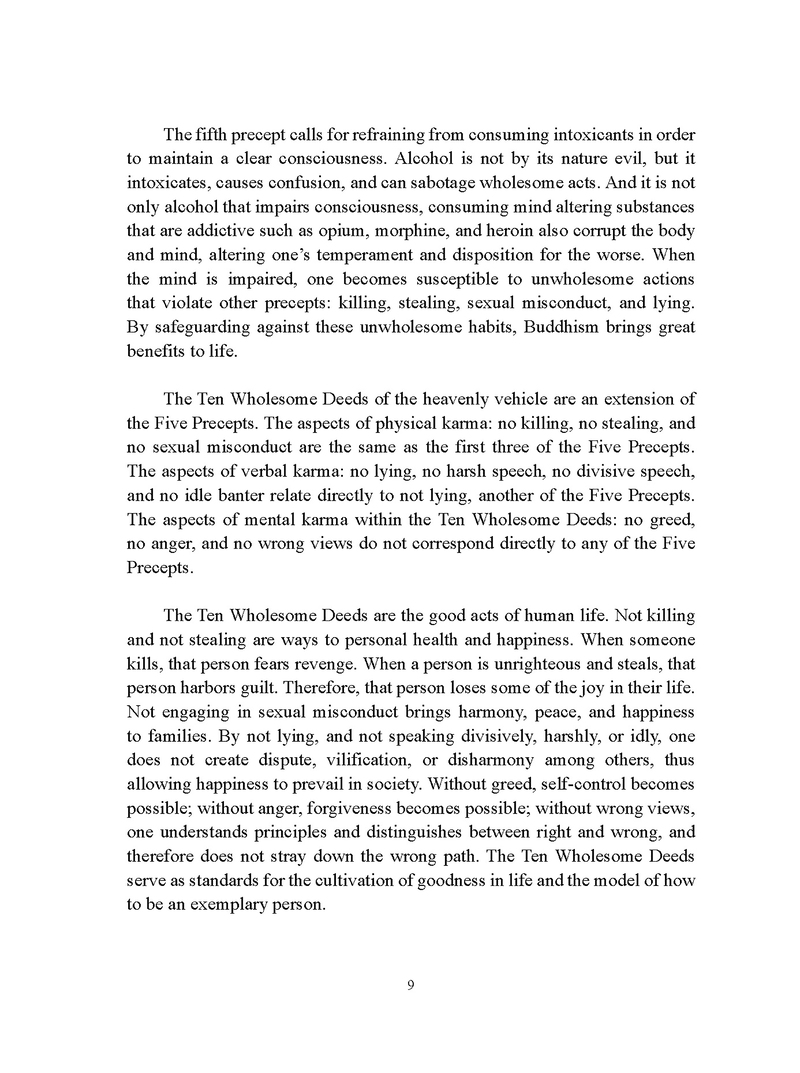

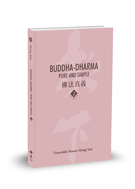

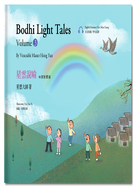

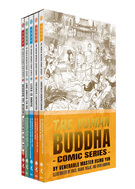
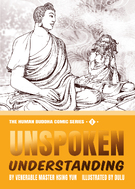
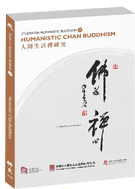
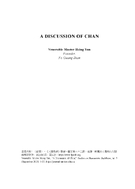
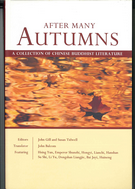

07-6561921 轉6664 ~ 6666
07-6563605
Email : fgce@ecp.fgs.org.tw
高雄市大樹區興田路153號
© 2025 佛光文化事業有限公司,統編:96958655 版權所有 All Rights Reserved. 26693417